The Division Review
Come for the sights, stay for the pom-pom beanies
It’s hard to know what Tom Clancy would make of The Division. The first time a man wearing a hoodie was shot in the noggin with a high powered sniper rifle and instead of dying a number flew out of his head, surely an eyebrow would be raised. So perhaps it is for the best that Tom Clancy isn’t around to see his name attached to a project with as wide a schism between its real-world premise and moment to moment gameplay as is present in The Division. Regardless of whether the Clancy prefix is appropriate, this is a game that requires no small suspension of disbelief if you want to buy into its world and also engage in its mechanics, but if you manage to reconcile these two distinct halves into a whole, you will find a highly playable and surprisingly addicting game here.
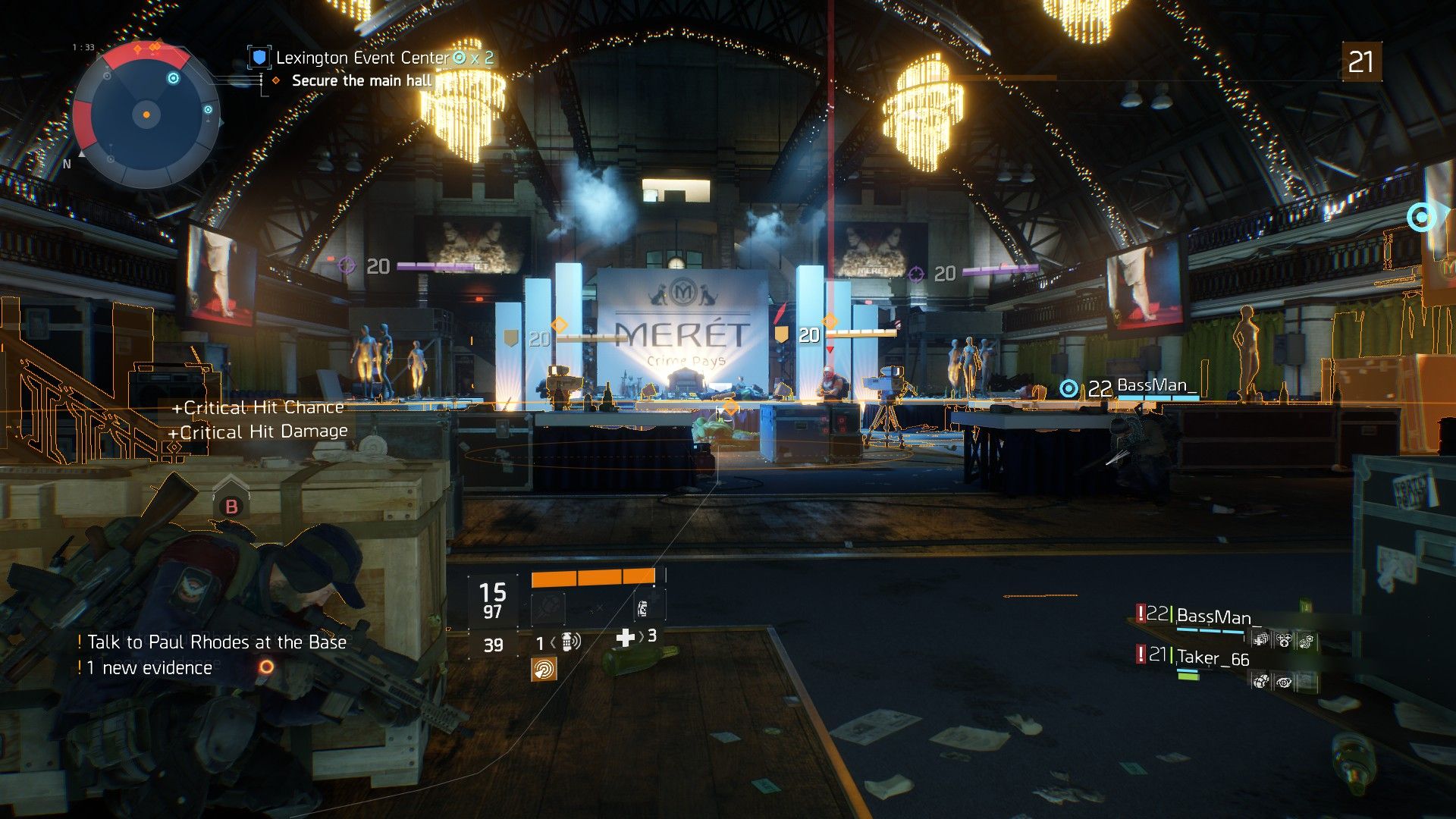
The premise that sees you shooting hoodie-clad men with high powered sniper rifles is actually not a bad one. On Black Friday in New York, currency contaminated with a highly contagious and deadly mutation of the Smallpox virus was introduced into circulation, the city was hit hard, and eventually put under quarantine. You enter the scene as a Division agent, part of a sleeper cell embedded within the city and activated during the crisis. You and other agents must work to investigate the virus, restore power to the city and deal with the violent groups that have emerged alarmingly quickly during the epidemic.
The actual narrative told through the story missions and cutscenes is pretty thin. The Division (the organization) is based out of a building that contains several branches, security, medical care and tech. The story missions and central narrative see you performing tasks for each wing, such as finding an important doctor or Intel on the virus for the medical wing or returning a power plant to working order for the tech wing. You will learn a bit about the virus and the different factions that now inhabit the city, but you won’t find yourself getting attached to any of the characters, and might find yourself questioning why exactly you are shooting some of these people. One group of enemies that appear late in the game in particular seem to have motivations similar to yours, and I had a hard time understanding why they were shooting at me.
Fortunately, The Division excels at environmental storytelling. While the open world doesn’t take up a huge area, it is incredibly dense and detailed. The streets are cluttered with debris and abandoned cars. Wandering around, exploring the interiors of deprecated buildings and going down into the subway tunnels gives you a good sense of how horribly wrong things have gone in New York. Exploration is rewarded with collectibles such as audio recordings that provide different perspectives on how society collapsed during and after the outbreak.
More importantly, exploration is rewarded with loot. Loot plays a major role in The Division, in a similar capacity to Borderlands or Destiny. There is an RPG-style character leveling and randomized loot system that underpins everything you do in The Division, with rarity tiers, stat bonuses and all. You get better loot from killing enemies. You get it from completing missions. You get it from crates. Underneath the pretty façade, The Division is really a game about making numbers go up. This might be the most important thing to know before going in: if loot and stat-driven games aren't your cup of tea, The Division probably isn’t for you. However for those who enjoy these sorts of experiences, The Division might be the best one yet.
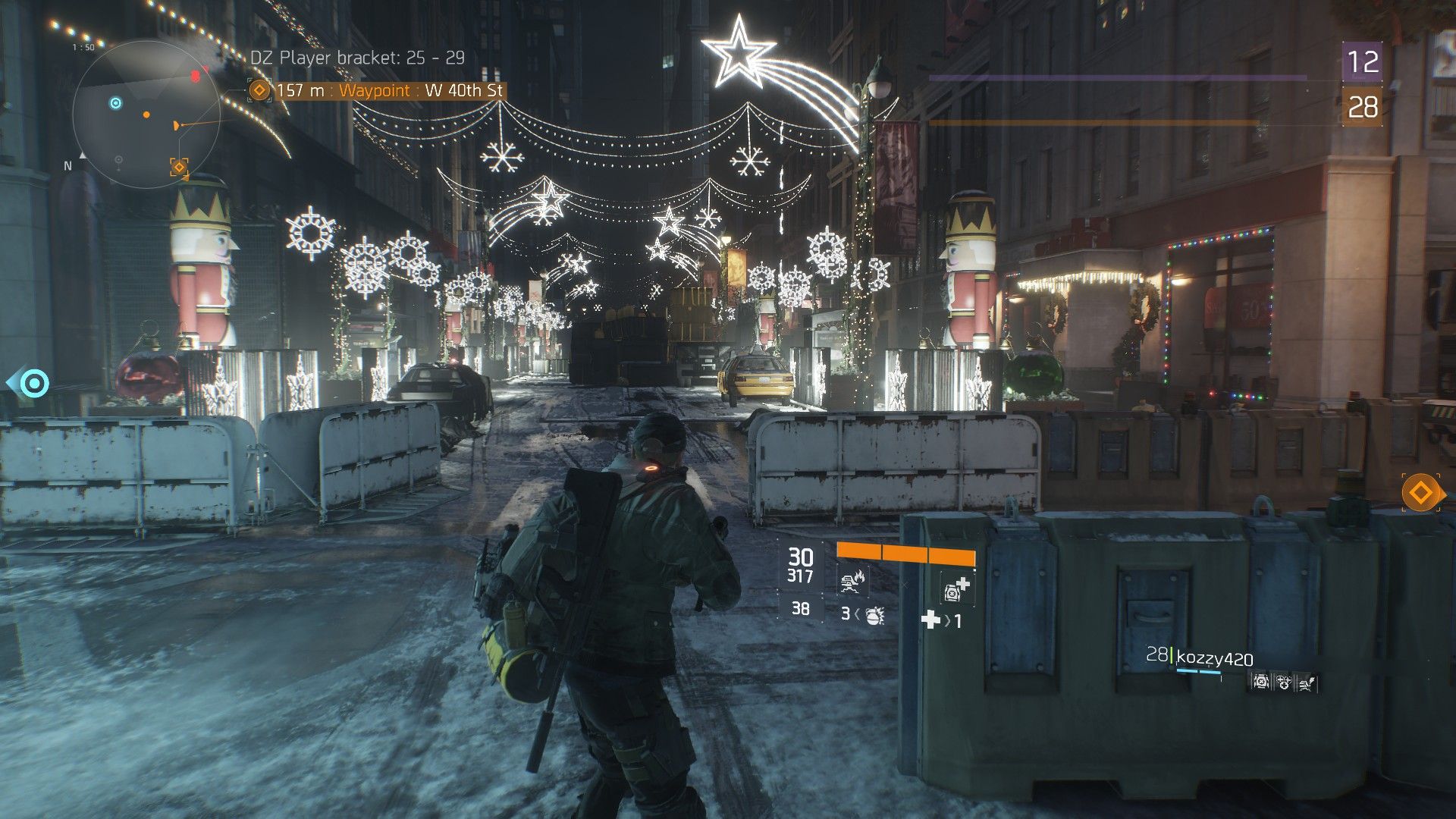
One of the main reasons for this in combination with the great setting is that the third-person cover based combat model is pretty good, and your equipment and ability choices play into combat in meaningful ways. Each Division agent can equip two main weapons and a side-arm, along with a couple of abilities and a variety of grenades. The firearms are all based on real-world weapons, and compared to crazy weaponry found in the aforementioned loot-driven counterparts, they can seem a bit drab. However there are enough weapon types and models that I was still excited when a new weapon dropped that was good enough to replace one I had equipped. You also have a bunch of different armor slots, and can spec your character to have high damage, more health, or more effective abilities.
You will need to take into account stats like damage per second, damage per shot, accuracy and range when deciding what two weapons and armor you want equipped at all times, and fiddling around with your gear until you get the perfect combo can be surprisingly satisfying. The abilities you unlock as you upgrade the different wings of the base also play into combat in a meaningful way. You can go for offensive abilities like seeker-mines which will home in on enemies before detonating, defensive skills that improve cover or healing abilities such as a healing station you plop down to dispense health to everyone nearby and even auto-revive anyone who gets knocked out. Further upgrades to the base wings will unlock mods for the abilities, alongside passive talents and perks, the former of which you can only select a few of, the latter permanently being applied to your character as they are unlocked.
The actual shooting and cover mechanics are solid as well once you get used to the fact that some enemies can absorb a lot of bullets. Weapons have a good amount of recoil and the cover system is intuitive. Once you are in cover, you can hold one button to dash to another cover location, and press another button to vault over or climb onto your current cover. Having to roll away from grenades while glued to a wall lead to some awkward moments, but generally things work brilliantly on both mouse and keyboard and with a controller.
The AI get a pass as groups typically mix enemies that will aggressively try to flank you with others that stay back and take pot-shots, though they will certainly have moments of stupidity where they run past you or decide to stand on a car. As long as you are fighting enemies close to your level, firefights tend to be just the right difficulty, and squad tactics when playing with others are necessary to survive against tougher opponents and reward communication. I would say that enemy variety is a bit lacking; there is a very long stretch in the middle of the game where you don’t run into any new factions or enemy types, though there is enough of a mix with the two factions you do fight during this period to keep things reasonably interesting.
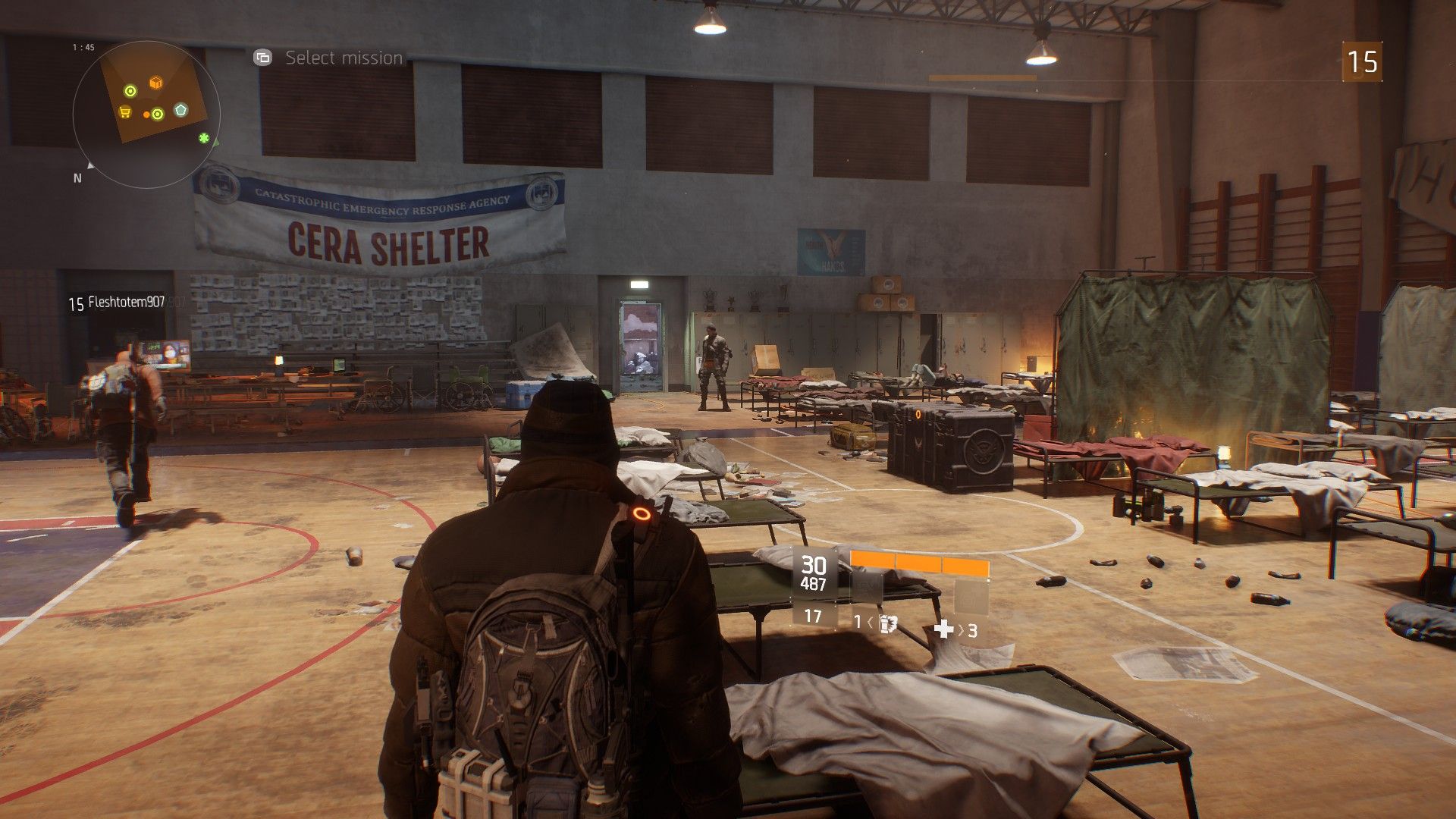
The context in which the fighting takes place is where the game sometimes runs into trouble. The dozen or so ‘story’ missions are the clear highlights, taking you to distinct and memorable locations you usually can’t otherwise access. These are often a healthy length and end with some challenging boss fights that you will struggle to survive if playing solo unless you are a couple levels above the mission. Apart from these, you will be completing side missions and encounters which are a mixed bag.
Side missions are completed for a nice chunk of XP and loot rewards, and vary in nature. The ones that have you going into subways or large structures to take on a particularly tough group of enemies, or the ones that have you tracking down a person by following a series of ‘echoes’ (holographic representations of past events complete with audio), are generally pretty good. Others however are much less interesting, including those that have you defending supply drops or running around trying to turn on power generators and breaker boxes in a short amount of time. Encounters fare even worse, as most of these simply involve clearing out a building or defending a location for a short period of time. It is also necessary to complete a lot of these in order to fully upgrade each wing of your base.
Completing the encounters and some of the less interesting side missions are the only times where The Division’s MMO-like aspects bogged it down, though the striking environments, engaging combat and promise of a good loot drop mean that even these moments of relative tedium aren’t too painful. Still, it’s easy to get caught up in clearing icons from your map, and also to forget there are loads of nooks and crannies full of loot chests and interesting details that break up the combat-heavy activities. If you take a completionist approach with the side activities you will probably burn out on the Division long before the level cap, but if you stick to areas that are close to your level and mix objectives with exploration, story missions or trips to the Dark Zone, you can probably stave off tedium for the 30-40 hours it takes to get to the level cap and complete the story.
The Dark Zone is the final piece of the urban puzzle, and is certainly the game’s most experimental aspect. This is the only area where you will run into other players who aren’t in your group. It is also the only area where you can shoot each other, although this is not limited to non-group members. In the Dark Zone, you wander around shooting the AI and collecting the loot they drop. Any loot you pick up is contaminated, and the only way you can use it is to call in a helicopter extraction at set locations which takes ninety seconds, something you will need to do regularly due to a limited number of inventory spaces for contaminated items. Any player who has picked up loot in the Dark Zone will have a yellow back strapped to their back. If another player wants that loot, he can kill the person carrying it and pick it up, designating the assailant as a ‘rogue agent.’
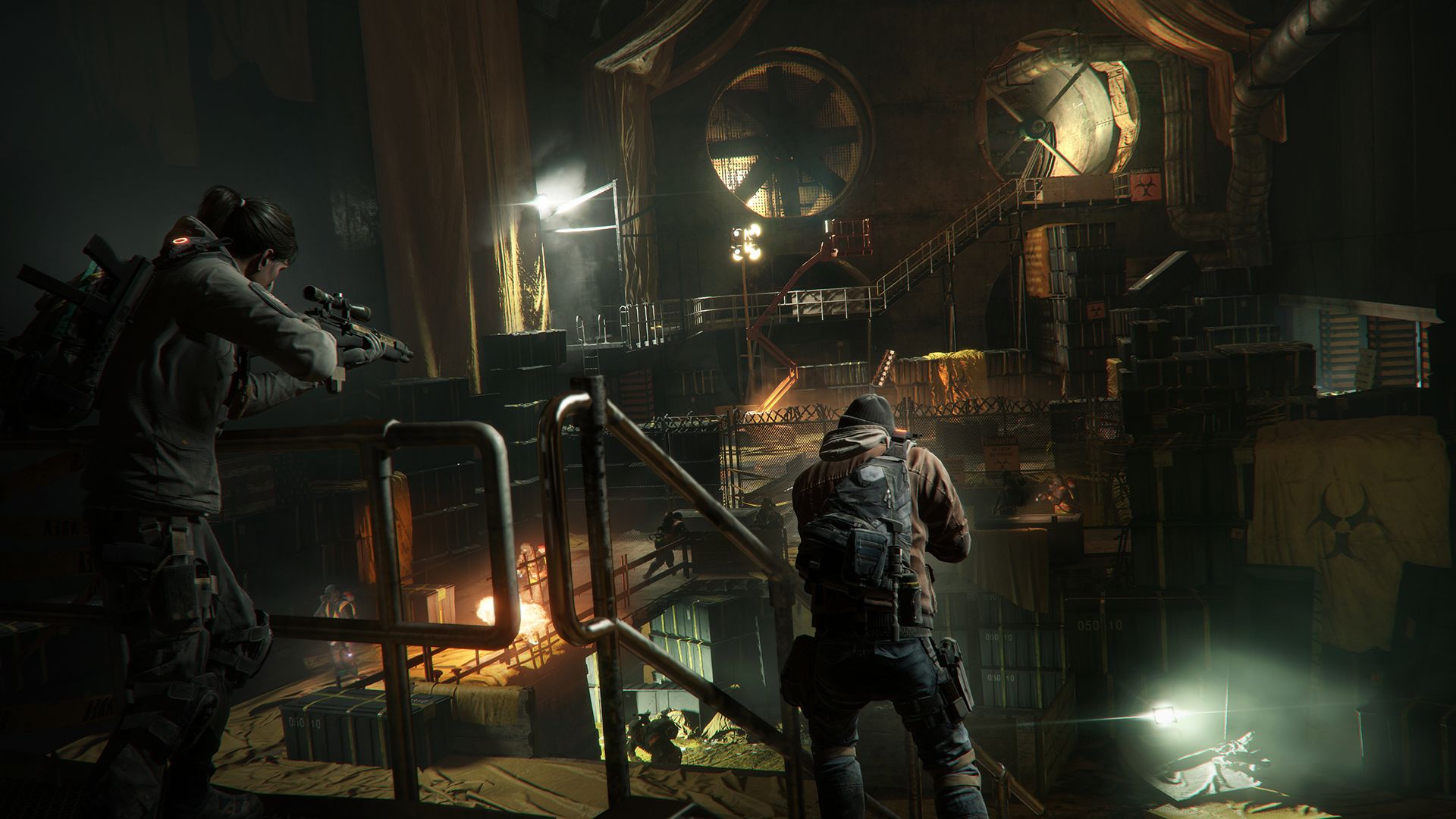
Going Rogue means everyone in that Dark Zone instance will have an icon on their map showing your location, and you must survive twenty second timer before this designation goes away. The timer goes up if you actually continue to damage and kill players. If you die as a rogue, you will lose ‘Dark Zone’ experience (a secondary character progression level) and anything you’re carrying. While these penalties might seem overly severe, I found that the rogue icon displaying on people’s maps was a few seconds out of date, meaning that if you keep moving, you have a good chance of survival, leading to some hilarious and thrilling chases through the streets of New York.
Even though most players in the Dark Zone are currently working together, the chance of a player going rogue is enough to give encounters with other players a feeling of tension, comparable to a watered-down feeling you get when seeing other players in DayZ. Still, the harsh penalties that come with dying while rogue mean the chance of running into a hostile player is low enough that an opportunity for added tension is missed. The aimless nature of the gameplay in this region also feels like a bit of a missed prospect; having to complete missions or even basic objectives in the Dark Zone would have helped to flesh this aspect of the game out a bit more.
While the Dark Zone can be accessed at any level, it feels most relevant after you have done everything else, part of the Division’s ‘end game.’ The furthest areas of the Dark Zone are fully populated with high level enemies, and a good way to get quality loot. Other end-game activities involve redoing story missions on ‘hard’ or ‘challenge’ difficulties which replace the usual enemies with much tougher versions and force you to really work together to finish them.
There is even a new currency called Phoenix Credits that unlocks at level 30 that lets you buy and respec high-end gear, though this currency is only doled out in small quantities by completing daily challenge missions or killing bosses. Although crafting is available for the entire game, it really comes into play at level 30 as you start to find blueprints for powerful gear and weapons. While the end game content currently feels a bit aimless, the promise of free updates with more high-level activities means that hopefully in the future things will come together to help boost the longevity of this already substantial experience.
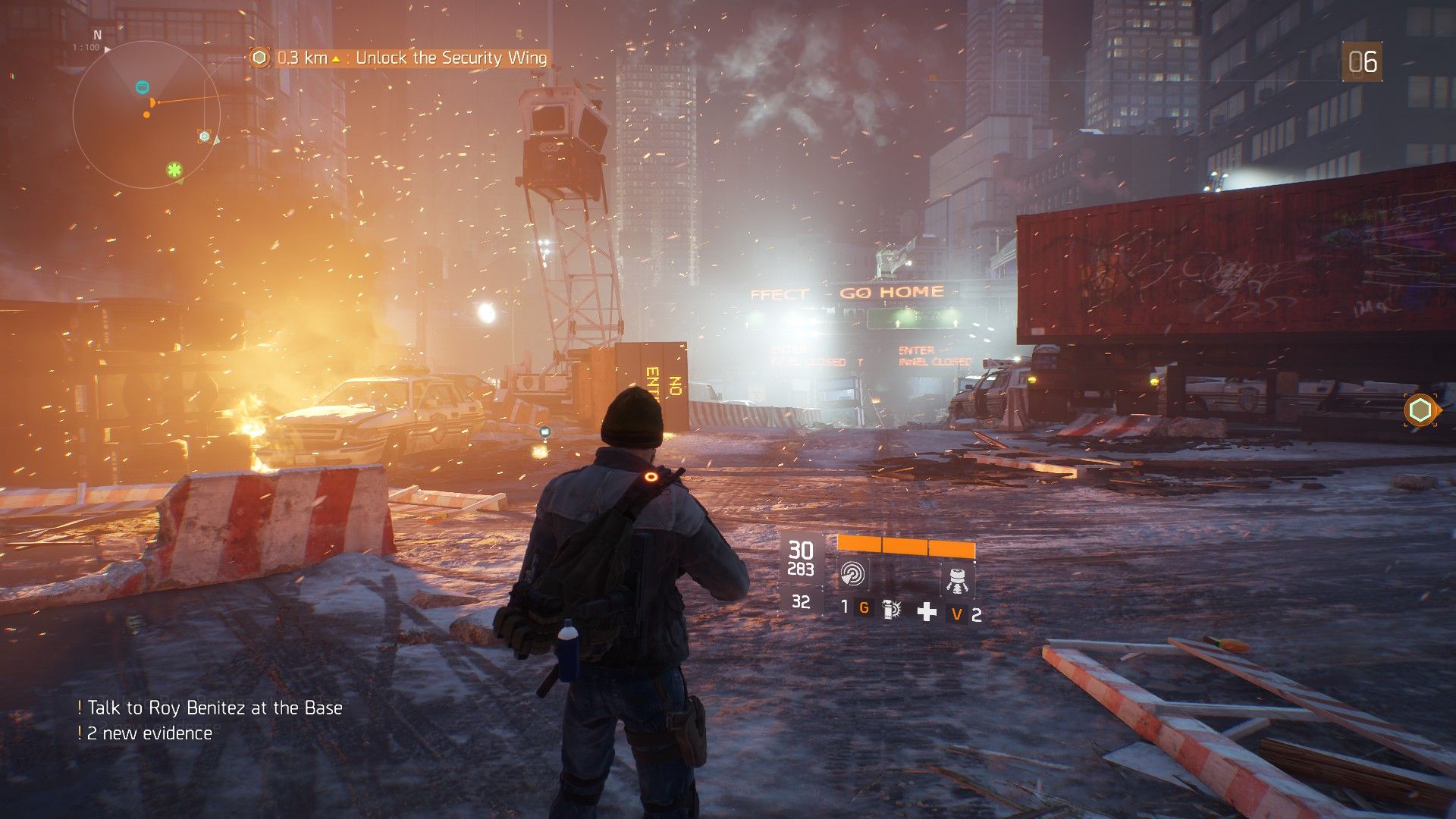
All of this is helped by the fact that The Division is a very technically proficient game. It’s easy to join your friends, and I never experienced any connection issues outside of scheduled server maintenance. If you don’t have friends to play with, you can use the game’s excellent matchmaking to join a group at any safe house, or at the start of any story mission. I never had trouble joining a group, and the game always put me with people close to my level. The game also runs very well, with smooth frame rates taking a hit only during the most intense firefights where it felt like it earned it. Some load times such as when fast traveling or joining a friend’s game can be a bit on the long side, but fortunately there are absolutely no load times when moving around the city.
Underpinning the great environmental design is the incredible engine that has been built for the game. The Snowdrop engine produces consistently stunning visuals, with levels of detail usually reserved for more linear experiences like Metro Last Light being present everywhere. Lighting and weather effects are particularly impressive; New York looks strikingly different at night and during the day. Snow storms will blow in, reducing visibility during firefights while snow accumulates on your agent and the environment. The interiors you explore during story missions or when heading underground are full of details and often ooze atmosphere.
Audio is also strong, with good sound design that immerses you in the city. Hearing distant gunfire and explosions in the Dark Zone will put you on the edge of your seat, and audio logs you pick and echoes you find up are typically well voiced. The score is generally subtle, picking up during combat and almost disappearing during lulls. Weapon sounds are the only area I could point to for improvement, and they are by no means bad, just not quite up to the standard set by the rest of the game’s presentation.
If you have any propensity for loot-driven shooters, I can’t recommend The Division highly enough, assuming you can get past the disconnect between the realistic setting and RPG-infused gameplay. While going through the game with a group of friends is certainly the best way to experience it, solo play lets you soak in the environments at your own pace and the flexible matchmaking means you can easily team up with others if you need help for a mission. While it is easy to poke holes in the story, and the variety of enemies and side activities is a bit lacking, I have put close to forty hours into the game. Despite hitting the level cap and finding pretty good gear, I am still itching to get back in and venture into tougher parts of the Dark Zone, find better loot, and spend more time in Ubisoft Massive’s incredible version of New York.
 Comments
Comments

















